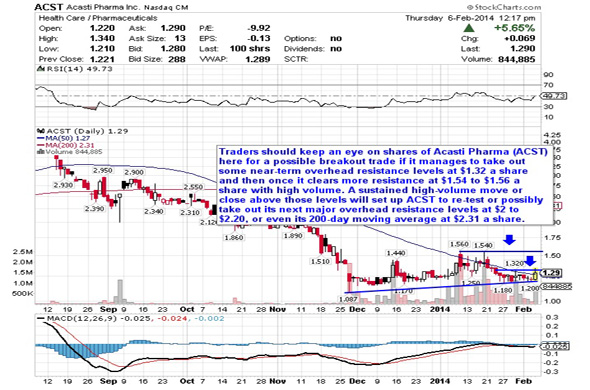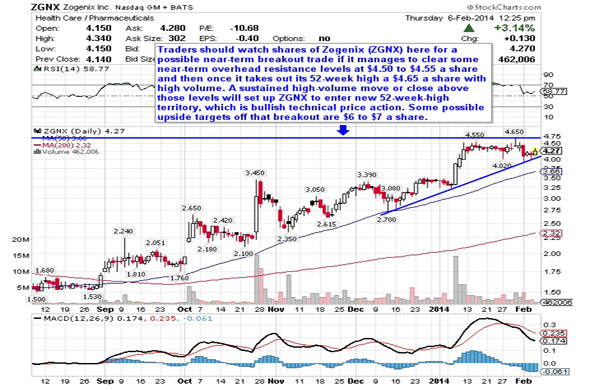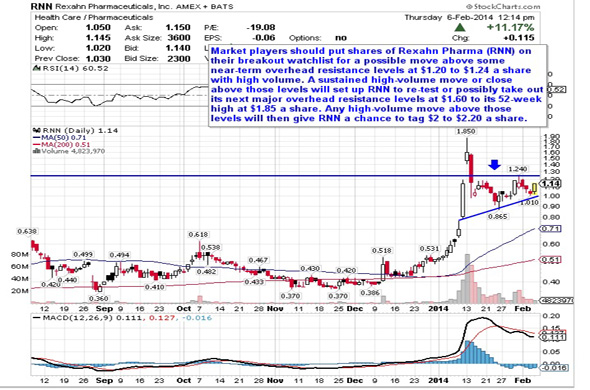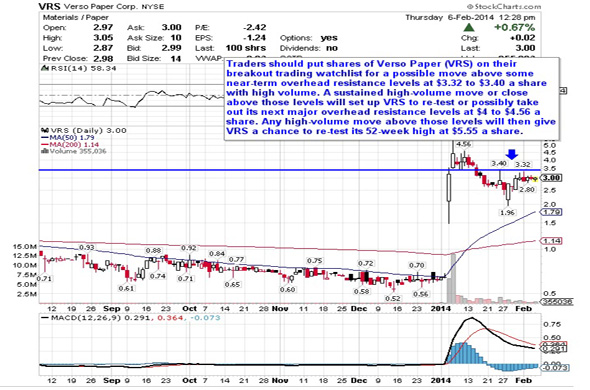While some argue that domestic small-cap leadership in 2013 was a result of its heavy exposure to companies that tend to generate most of their income domestically, others contest that this greater focus on the U.S. may mean missing out on the benefits of faster-growing foreign economies.
We, on the other hand, choose to focus our attentions on individual companies, particularly those in more cyclical areas of the market that are more closely tied to the global economy.
There have always been generalizations about the economy and the stock market. Many possess a degree of truth, but at least an equal number are just as often exaggerated, misunderstood, or just plain wrong. This is particularly true when it comes to the small-cap asset class.
Considering the barrage of macro headlines that have affected global stock markets over the last several years, we thought it would be worthwhile to once again examine the state of international small-caps and the effect of international revenues on recent small-cap performance.
These issues interest us for two related reasons: Many of the cyclical sectors in which we routinely find bargains that we like—Industrials, Information Technology, Energy, and Materials—often derive a sizable chunk of their respective revenues from outside the U.S.
We also have been expanding our activities in non-U.S. investing over the last several years. All of this makes the state of international investing particularly interesting to us.
Earlier in 2013, some observers claimed that because many companies in the small-cap Russell 2000 Index are more closely tied to domestic growth, the index was able to hold an advantage over its large-cap counterparts. (This advantage held true for the year as a whole—small-cap led the domestic indexes, and all had higher returns than their non-U.S. counterparts.)
The argument developed the idea that greater stateside focus benefited smaller companies particularly earlier this year when investors were worried about economic growth in Europe and Asia.
2013's results notwithstanding, others see a greater focus on the U.S. as a potential disadvantage, believing that the typically higher percentage of domestically generated revenue for small companies may keep them from enjoying the benefits of faster-growing foreign economies.
We examine the source of revenues for each company that we look at, though we are only concerned with their geographic origin if our analysis suggests that location is a potential threat to their sustainability. However, we suspect that the weighted average percentage of revenue being generated outside of the U.S. for many of our portfolios that invest primarily in U.S. smaller companies would be greater than that of the Russell 2000.
This is in large part a matter of what we choose to own versus what we do not—a clear benefit of active management in our view. For example, we are generally underweight, or do not own, Utilities, real estate investment trusts, and small banks, all of which make up a good-sized portion of the Russell 2000 and generate most of their income domestically.
At the same time, we have greater exposure to more cyclical areas of the market that are more closely tied to the global economy, such as Information Technology, Industrials, Materials, and Energy.
Over the last 15 years, we have expanded our search for undervalued companies by moving beyond our borders. Our initial forays into international investing generally involved companies headquartered abroad that had a strong U.S. presence. We then began to expand our scope to include companies with sizeable operations outside the U.S.
Our commitment to international investing is rooted in the Royce tradition, which aims to capitalize on market inefficiencies to generate strong absolute returns while actively managing risk.
In addition, we embrace the idea that quality is a global concept that transcends borders. The same attributes that we seek in smaller U.S. companies—strong balance sheets, an established record of profitability, high returns on invested capital, and the ability to generate free cash flow—can be found in international businesses. This is why investing in non-U.S. companies has become an important part of our asset management efforts.
Important Disclosure Information
The thoughts in this essay concerning the stock market are solely those of Royce & Associates, LLC and, of course, there can be no assurance with regard to future market movements. Past performance is no guarantee of future results.
This material is not authorized for distribution unless preceded or accompanied by a currentprospectus. Please read the prospectus carefully before investing or sending money. Investments in securities of small-cap, micro-cap, and/or mid-cap companies may involve considerably more risk than investments in securities of larger-cap companies. (See "Primary Risks for Fund Investors" in the respective prospectus.) Investments in foreign companies may be subject to different risks than investments in securities of U.S. companies, including adverse political, social, economic, or other developments that are unique to a particular country or region. (Please see "Investing in International Securities" in the prospectus.) Russell Investment Group is the source and owner of the trademarks, service marks and copyrights related to the Russell Indexes. Russell® is a trademark of Russell Investment Group. The Russell 2000 is an unmanaged, capitalization-weighted index of domestic small-cap stocks. It measures the performance of the 2,000 smallest publicly traded U.S. companies in the Russell 3000 index. The S&P 500 is an index of U.S. large-cap stocks selected by Standard & Poor's based on market size, liquidity, and industry grouping, among other factors. The performance of an index does not represent exactly any particular investment, as you cannot invest directly in an index.
Also check out: Chuck Royce Undervalued Stocks Chuck Royce Top Growth Companies Chuck Royce High Yield stocks, and Stocks that Chuck Royce keeps buying
| Currently 0.00/512345 Rating: 0.0/5 (0 votes) |

Subscribe via Email

Subscribe RSS Comments Please leave your comment:
More GuruFocus Links
| Latest Guru Picks | Value Strategies |
| Warren Buffett Portfolio | Ben Graham Net-Net |
| Real Time Picks | Buffett-Munger Screener |
| Aggregated Portfolio | Undervalued Predictable |
| ETFs, Options | Low P/S Companies |
| Insider Trends | 10-Year Financials |
| 52-Week Lows | Interactive Charts |
| Model Portfolios | DCF Calculator |
RSS Feed  | Monthly Newsletters |
| The All-In-One Screener | Portfolio Tracking Tool |
MORE GURUFOCUS LINKS
| Latest Guru Picks | Value Strategies |
| Warren Buffett Portfolio | Ben Graham Net-Net |
| Real Time Picks | Buffett-Munger Screener |
| Aggregated Portfolio | Undervalued Predictable |
| ETFs, Options | Low P/S Companies |
| Insider Trends | 10-Year Financials |
| 52-Week Lows | Interactive Charts |
| Model Portfolios | DCF Calculator |
RSS Feed  | Monthly Newsletters |
| The All-In-One Screener | Portfolio Tracking Tool |
SPY STOCK PRICE CHART

184.02 (1y: +21%) $(function() { var seriesOptions = [], yAxisOptions = [], name = 'SPY', display = ''; Highcharts.setOptions({ global: { useUTC: true } }); var d = new Date(); $current_day = d.getDay(); if ($current_day == 5 || $current_day == 0 || $current_day == 6){ day = 4; } else{ day = 7; } seriesOptions[0] = { id : name, animation:false, color: '#4572A7', lineWidth: 1, name : name.toUpperCase() + ' stock price', threshold : null, data : [[1360908000000,152.11],[1361253600000,153.25],[1361340000000,151.34],[1361426400000,150.42],[1361512800000,151.89],[1361772000000,149],[1361858400000,150.02],[1361944800000,151.91],[1362031200000,151.61],[1362117600000,152.11],[1362376800000,152.92],[1362463200000,154.29],[1362549600000,154.5],[1362636000000,154.78],[1362722400000,155.44],[1362978000000,156.03],[1363064400000,155.68],[1363150800000,155.91],[1363237200000,156.73],[1363323600000,155.83],[1363582800000,154.97],[1363669200000,154.61],[1363755600000,155.69],[1363842000000,154.36],[1363928400000,155.6],[1364187600000,154.95],[1364274000000,156.19],[1364360400000,156.19],[1364446800000,156.67],[1364533200000,156.67],[1364792400000,156.05],[1364878800000,156.82],[1364965200000,155.23],[1365051600000,155.86],[1365138000000,155.16],[1365397200000,156.21],[1365483600000,156.75],[1365570000000,158.67],[1365742800000,158.8],[1366002000000,155.12],[1366088400000,157.41],[1366174800000,155.11],[1366261200000,154.14],[1366347600000,155.48],[1366606800000,156.17],[1366693200000,157.78],[1366779600000,157.88],[1366866000000,158.52],[1366952400000,158.24],[1367211600000,159.3],[1367298000000,159.68],[1367384400000,158.28],[1367470800000,159.75],[1367557200000,161.37],[1367816400000,161.78],[1367902800000,162.6],[1367989200000,163.34],[1368075600000,162.88],[1368162000000,163.41],[1368421200000,163.54],[1368507600000,165.23],[1368594000000,166.12],[1368680400000,165.34],[1368766800000,166.94],[1369026000000,166.93],[1369112400000,167.17],[1369198800000,165.93],[1369285200000,165.45],[1369371600000,165.31],[1369630800000,165.31],[1369717200000,166.3],[1369803600000,165.22],[1369890000000,165.83],[1369976400000,163.45],[1370235600000,164.35],[1370322000000,163.56],[1370408400000,161.27],[1370494800000,162.73],[1370581200000,164.8],[1370840400000,164.8],[1370926800000,163.1],[1371013200000,161.75],[1371099600000,164.21],[1371186000000,163.18],[1371358800000,163.18],[1371445200000,164.44],[1371531600000,165.74],[1371618000000,163.45],[1371704400000,159.4],! [1371790800000,159.07],[1372050000000,157.06],[1372136400000,158.58],[1372222800000,160.14],[1372309200000,161.08],[1372395600000,160.42],[1372654800000,161.36],[1372741200000,161.21],[1372827600000,161.28],[1372914000000,161.28],[1373000400000,163.02],[1373259600000,163.95],[1373346000000,165.13],[1373432400000,165.19],[1373518800000,167.44],[1373605200000,167.51],[1373864400000,168.16],[1373950800000,167.53],[1374037200000,167.95],[1374123600000,168.87],[1374210000000,169.17],[1374469200000,169.5],[1374555600000,169.14],[1374642000000,168.52],[1374728400000,168.93],[1374814800000,169.11],[1375074000000,168.59],[1375160400000,168.59],[1375246800000,168.71],[1375333200000,170.66],[1375419600000,170.95],[1375678800000,170.7],[1375765200000,169.73],[1375851600000,169.18],[1375938000000,169.8],[1376024400000,169.31],[1376283600000,169.11],[1376370000000,169.61],[1376456400000,168.74],[1376542800000,166.38],[1376629200000,165.83],[1376888400000,164.77],[1376974800000,165.58],[1377061200000,164.56],[1377147600000,166.06],[1377234000000,166.62],[1377493200000,166],[1377579600000,163.33],[1377666000000,163.91],[1377752400000,164.17],[1377838800000,163.65],[1378098000000,163.65],[1378184400000,164.39],[1378270800000,165.75],[1378357200000,165.96],[1378443600000,166.04],[1378702800000,167.63],[1378789200000,168.87],[1378875600000,169.4],[1378962000000,168.95],[1379048400000,169.33],[1379307600000,170.31],[1379394000000,171.07],[1379480400000,173.05],[1379566800000,172.76],[1379653200000,170.72],[1379912400000,169.93],[1379998800000,169.53],[1380085200000,169.04],[1380171600000,169.69],[1380258000000,168.91],[1380517200000,168.01],[1380603600000,169.34],[1380690000000,169.18],[1380776400000,167.62],[1380862800000,168.89],[1381122000000,167.43],[1381208400000,165.48],[1381294800000,165.6],[1381381200000,169.17],[138146760
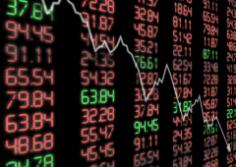 Related BZSUM Mid-Morning Market Update: Markets Mixed; Signet To Acquire Zale For $21/Share #PreMarket Primer: Wednesday, February 19: Tesla Earnings Expected Today
Related BZSUM Mid-Morning Market Update: Markets Mixed; Signet To Acquire Zale For $21/Share #PreMarket Primer: Wednesday, February 19: Tesla Earnings Expected Today 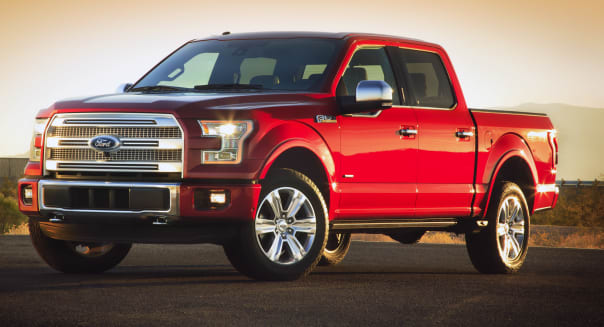 Ford/APThe new 2015 Ford F-150 pickup. DEARBORN, Mich. -- Ford pickups have been doing the country's work for 66 years. They've hauled grain, towed logs and plowed snow. They've cleared debris after tornadoes and pulled floats in the Rose Bowl parade. They've shouldered those loads with parts forged from steel. Until now. On Monday, Ford (F) unveils a new F-150 with a body built almost entirely out of aluminum. The lighter material shaves as much as 700 pounds off the 5,000-pound truck, a revolutionary change for a vehicle known for its heft and an industry still heavily reliant on steel. The change is Ford's response to small-business owners' desire for a more fuel-efficient and nimble truck -- and stricter government requirements on fuel economy. And it sprang from a challenge by Ford's CEO to move beyond the traditional design for a full-size pickup. "You're either moving ahead and you're improving and you're making it more valuable and more useful to the customer or you're not," Chief Executive Officer Alan Mulally told The Associated Press in a recent interview. Ninety-seven percent of the body of the 2015 F-150 is aluminum, the most extensive use of aluminum ever in a truck. And this isn't just any truck. F-Series trucks -- which include the F-150 and heavier duty models like the F-250 -- have been the best-selling vehicles in the U.S. for the last 32 years; last year, Ford sold an F-Series every 41 seconds. The key question for Ford, and the people who sell its trucks, is: Will customers embrace such a radical change? Dealers who have seen the new F-150 say they expect to encounter some skepticism, but the change had to be made. "We're aggressive, stretching the envelope," said Sam Pack, owner of four Ford dealerships in the Dallas-Fort Worth area. "I think you have to do that. If you don't, then you get into that predicament of being a 'me too' vehicle." Still, it's a big risk. Ford makes an estimated $10,000 profit on every F-Series truck it sells, making trucks a $7.6 billion profit center in the U.S. alone last year. And the company has had some quality issues with recent vehicle launches, adding to dealers' worries. The 2013 Escape small SUV has been the subject of seven recalls. The 2015 F-150 goes on sale late this year. While aluminum is more expensive that steel, Ford truck marketing chief Doug Scott says the F-Series will stay within the current price range. F-Series trucks now range from a starting price of $24,445 for a base model to $50,405 for a top-of-the-line Limited. It's difficult to calculate how much more aluminum costs, since there are different grades of aluminum and steel. Pete Reyes, the F-150's chief engineer, said Ford expects to make up the premium by reducing its recycling costs, since there will be less metal to recycle, and by slimming down the engine and other components, since they won't have to move so much weight. Aluminum was used on cars even before the first F-Series went on sale in 1948. It's widely used on sporty, low-volume cars now, like the Tesla (TSLA) Model S electric sedan and the Land Rover Evoque. U.S. Postal Service trucks are also made of aluminum. Ford has spent decades researching the metal. Twenty years ago, the company built a fleet of 20 all-aluminum experimental sedans. Later, it used aluminum on exotic cars from Aston-Martin and Jaguar, brands it used to own. But up to now, Ford limited the aluminum on its trucks to the hoods and used steel for the rest. Higher Fuel-Economy Mandates New government fuel economy requirements, which mandate that automakers' cars and trucks get a combined 54.5 miles per gallon by 2025, are speeding the switch to aluminum. Chrysler's Ram is currently the most fuel-efficient pickup, getting 25 mpg on the highway. The current F-150 gets as much as 23 mpg. Ford won't say what the new truck's fuel economy will be, but says it will trump the competition. That could be an especially important incentive for landscapers, carpenters and other small business owners focused on their bottom line. "I think that's going to outweigh the aluminum part of it," said Brian Jarrett, a Ford dealer in Winter Haven, Fla., who hasn't yet seen the new truck. Improvements in aluminum are also driving the change. Three years ago, for example, Alcoa Inc. (AA) -- one of Ford's suppliers for the F-150 -- figured out a way to pretreat aluminum so it would be more durable when parts are bonded together. Carmakers can now use three or four rivets to piece together parts that would have needed 10 rivets before, Alcoa spokesman Kevin Lowery said. And Ford is able to take more risks. When the F-150 was last redesigned, in the mid-2000s, Ford was losing billions each year and resources were spread thin. But by 2010, when the company gave the green light to an all-aluminum truck, Ford was making money again. CEO Alan Mulally, a former Boeing Co. (BA) executive who joined Ford in 2006, encouraged his team to think bigger. After all, it was Mulally who led early development of Boeing's Dreamliner, which replaced aluminum with even lighter-weight plastics to be more efficient and fly further. "Everything becomes more efficient once you take the weight out," Mulally says. He expects aluminum to be used across Ford's model lineup in the future. Ford is convinced truck buyers will accept the change. The company says the new truck will tow more and haul more, since the engine doesn't have to account for so much weight. It can also accelerate and stop more quickly. Aluminum doesn't rust, Ford says, and it's more resistant to dents. Reyes says the company planted prototype F-150s with three companies -- in mining, construction and power -- for two years without revealing they were aluminum. The companies didn't notice a difference. Mulally says Ford's customers have already shown a willingness to adopt new technology. Forty percent of the F-Series trucks sold last year had Ford's more efficient EcoBoost engines, for example, which were introduced just three years ago. And Mulally says owners trust Ford. Ford will still have a tough time wresting customers from the competition, mainly Chevrolet, GMC and Ram, says Jesse Toprak, an independent auto industry consultant in Los Angeles. Brand Loyalty "Movement between brands in the full-size truck segment is extremely minimal," Toprak says. "It's the strongest loyalty of any segment." Still, about 20 percent of pickup buyers traditionally are open to jumping from brand to brand based on features or price, Toprak said. The company with the newest, most advanced truck has the advantage in getting those customers, plus those who are new to the market, Toprak says. Some steel remains on the truck. The frame beneath it is built primarily of high-strength steel, which Ford says will make it tougher and stiffer than the current frame. There's also steel in the front dashboard, because Ford thought steel was better at dampening nose from the engine. In all, a four-door F-150 has 660 pounds of aluminum, or nearly double the average use of aluminum per vehicle used now, according to Drive Aluminum, an aluminum industry website. If the Ford truck is a success, use of aluminum could expand rapidly at the expense of steel. "People are beginning to truly understand the value that aluminum can bring to the table," Lowery said. Ford is expecting some issues with the design or the manufacturing as it makes the change, Mulally said. But the company is working hard to troubleshoot. "I think the attitude is, expect the unexpected and expect to deal with it," he says. "Sometimes I think our core competency is scrambling. That's not unique to Ford." Mulally, who grew up driving an F-150 on his family's farm in Kansas, particularly likes the new truck's front windows, which dip down 2 inches for better visibility. "That's just an unbelievable innovation. You're sitting up there and you need to know where you are," he says. "I think that is absolutely a laser focus on what the customer wants and values."
Ford/APThe new 2015 Ford F-150 pickup. DEARBORN, Mich. -- Ford pickups have been doing the country's work for 66 years. They've hauled grain, towed logs and plowed snow. They've cleared debris after tornadoes and pulled floats in the Rose Bowl parade. They've shouldered those loads with parts forged from steel. Until now. On Monday, Ford (F) unveils a new F-150 with a body built almost entirely out of aluminum. The lighter material shaves as much as 700 pounds off the 5,000-pound truck, a revolutionary change for a vehicle known for its heft and an industry still heavily reliant on steel. The change is Ford's response to small-business owners' desire for a more fuel-efficient and nimble truck -- and stricter government requirements on fuel economy. And it sprang from a challenge by Ford's CEO to move beyond the traditional design for a full-size pickup. "You're either moving ahead and you're improving and you're making it more valuable and more useful to the customer or you're not," Chief Executive Officer Alan Mulally told The Associated Press in a recent interview. Ninety-seven percent of the body of the 2015 F-150 is aluminum, the most extensive use of aluminum ever in a truck. And this isn't just any truck. F-Series trucks -- which include the F-150 and heavier duty models like the F-250 -- have been the best-selling vehicles in the U.S. for the last 32 years; last year, Ford sold an F-Series every 41 seconds. The key question for Ford, and the people who sell its trucks, is: Will customers embrace such a radical change? Dealers who have seen the new F-150 say they expect to encounter some skepticism, but the change had to be made. "We're aggressive, stretching the envelope," said Sam Pack, owner of four Ford dealerships in the Dallas-Fort Worth area. "I think you have to do that. If you don't, then you get into that predicament of being a 'me too' vehicle." Still, it's a big risk. Ford makes an estimated $10,000 profit on every F-Series truck it sells, making trucks a $7.6 billion profit center in the U.S. alone last year. And the company has had some quality issues with recent vehicle launches, adding to dealers' worries. The 2013 Escape small SUV has been the subject of seven recalls. The 2015 F-150 goes on sale late this year. While aluminum is more expensive that steel, Ford truck marketing chief Doug Scott says the F-Series will stay within the current price range. F-Series trucks now range from a starting price of $24,445 for a base model to $50,405 for a top-of-the-line Limited. It's difficult to calculate how much more aluminum costs, since there are different grades of aluminum and steel. Pete Reyes, the F-150's chief engineer, said Ford expects to make up the premium by reducing its recycling costs, since there will be less metal to recycle, and by slimming down the engine and other components, since they won't have to move so much weight. Aluminum was used on cars even before the first F-Series went on sale in 1948. It's widely used on sporty, low-volume cars now, like the Tesla (TSLA) Model S electric sedan and the Land Rover Evoque. U.S. Postal Service trucks are also made of aluminum. Ford has spent decades researching the metal. Twenty years ago, the company built a fleet of 20 all-aluminum experimental sedans. Later, it used aluminum on exotic cars from Aston-Martin and Jaguar, brands it used to own. But up to now, Ford limited the aluminum on its trucks to the hoods and used steel for the rest. Higher Fuel-Economy Mandates New government fuel economy requirements, which mandate that automakers' cars and trucks get a combined 54.5 miles per gallon by 2025, are speeding the switch to aluminum. Chrysler's Ram is currently the most fuel-efficient pickup, getting 25 mpg on the highway. The current F-150 gets as much as 23 mpg. Ford won't say what the new truck's fuel economy will be, but says it will trump the competition. That could be an especially important incentive for landscapers, carpenters and other small business owners focused on their bottom line. "I think that's going to outweigh the aluminum part of it," said Brian Jarrett, a Ford dealer in Winter Haven, Fla., who hasn't yet seen the new truck. Improvements in aluminum are also driving the change. Three years ago, for example, Alcoa Inc. (AA) -- one of Ford's suppliers for the F-150 -- figured out a way to pretreat aluminum so it would be more durable when parts are bonded together. Carmakers can now use three or four rivets to piece together parts that would have needed 10 rivets before, Alcoa spokesman Kevin Lowery said. And Ford is able to take more risks. When the F-150 was last redesigned, in the mid-2000s, Ford was losing billions each year and resources were spread thin. But by 2010, when the company gave the green light to an all-aluminum truck, Ford was making money again. CEO Alan Mulally, a former Boeing Co. (BA) executive who joined Ford in 2006, encouraged his team to think bigger. After all, it was Mulally who led early development of Boeing's Dreamliner, which replaced aluminum with even lighter-weight plastics to be more efficient and fly further. "Everything becomes more efficient once you take the weight out," Mulally says. He expects aluminum to be used across Ford's model lineup in the future. Ford is convinced truck buyers will accept the change. The company says the new truck will tow more and haul more, since the engine doesn't have to account for so much weight. It can also accelerate and stop more quickly. Aluminum doesn't rust, Ford says, and it's more resistant to dents. Reyes says the company planted prototype F-150s with three companies -- in mining, construction and power -- for two years without revealing they were aluminum. The companies didn't notice a difference. Mulally says Ford's customers have already shown a willingness to adopt new technology. Forty percent of the F-Series trucks sold last year had Ford's more efficient EcoBoost engines, for example, which were introduced just three years ago. And Mulally says owners trust Ford. Ford will still have a tough time wresting customers from the competition, mainly Chevrolet, GMC and Ram, says Jesse Toprak, an independent auto industry consultant in Los Angeles. Brand Loyalty "Movement between brands in the full-size truck segment is extremely minimal," Toprak says. "It's the strongest loyalty of any segment." Still, about 20 percent of pickup buyers traditionally are open to jumping from brand to brand based on features or price, Toprak said. The company with the newest, most advanced truck has the advantage in getting those customers, plus those who are new to the market, Toprak says. Some steel remains on the truck. The frame beneath it is built primarily of high-strength steel, which Ford says will make it tougher and stiffer than the current frame. There's also steel in the front dashboard, because Ford thought steel was better at dampening nose from the engine. In all, a four-door F-150 has 660 pounds of aluminum, or nearly double the average use of aluminum per vehicle used now, according to Drive Aluminum, an aluminum industry website. If the Ford truck is a success, use of aluminum could expand rapidly at the expense of steel. "People are beginning to truly understand the value that aluminum can bring to the table," Lowery said. Ford is expecting some issues with the design or the manufacturing as it makes the change, Mulally said. But the company is working hard to troubleshoot. "I think the attitude is, expect the unexpected and expect to deal with it," he says. "Sometimes I think our core competency is scrambling. That's not unique to Ford." Mulally, who grew up driving an F-150 on his family's farm in Kansas, particularly likes the new truck's front windows, which dip down 2 inches for better visibility. "That's just an unbelievable innovation. You're sitting up there and you need to know where you are," he says. "I think that is absolutely a laser focus on what the customer wants and values." 

 184.02 (1y: +21%) $(function() { var seriesOptions = [], yAxisOptions = [], name = 'SPY', display = ''; Highcharts.setOptions({ global: { useUTC: true } }); var d = new Date(); $current_day = d.getDay(); if ($current_day == 5 || $current_day == 0 || $current_day == 6){ day = 4; } else{ day = 7; } seriesOptions[0] = { id : name, animation:false, color: '#4572A7', lineWidth: 1, name : name.toUpperCase() + ' stock price', threshold : null, data : [[1360908000000,152.11],[1361253600000,153.25],[1361340000000,151.34],[1361426400000,150.42],[1361512800000,151.89],[1361772000000,149],[1361858400000,150.02],[1361944800000,151.91],[1362031200000,151.61],[1362117600000,152.11],[1362376800000,152.92],[1362463200000,154.29],[1362549600000,154.5],[1362636000000,154.78],[1362722400000,155.44],[1362978000000,156.03],[1363064400000,155.68],[1363150800000,155.91],[1363237200000,156.73],[1363323600000,155.83],[1363582800000,154.97],[1363669200000,154.61],[1363755600000,155.69],[1363842000000,154.36],[1363928400000,155.6],[1364187600000,154.95],[1364274000000,156.19],[1364360400000,156.19],[1364446800000,156.67],[1364533200000,156.67],[1364792400000,156.05],[1364878800000,156.82],[1364965200000,155.23],[1365051600000,155.86],[1365138000000,155.16],[1365397200000,156.21],[1365483600000,156.75],[1365570000000,158.67],[1365742800000,158.8],[1366002000000,155.12],[1366088400000,157.41],[1366174800000,155.11],[1366261200000,154.14],[1366347600000,155.48],[1366606800000,156.17],[1366693200000,157.78],[1366779600000,157.88],[1366866000000,158.52],[1366952400000,158.24],[1367211600000,159.3],[1367298000000,159.68],[1367384400000,158.28],[1367470800000,159.75],[1367557200000,161.37],[1367816400000,161.78],[1367902800000,162.6],[1367989200000,163.34],[1368075600000,162.88],[1368162000000,163.41],[1368421200000,163.54],[1368507600000,165.23],[1368594000000,166.12],[1368680400000,165.34],[1368766800000,166.94],[1369026000000,166.93],[1369112400000,167.17],[1369198800000,165.93],[1369285200000,165.45],[1369371600000,165.31],[1369630800000,165.31],[1369717200000,166.3],[1369803600000,165.22],[1369890000000,165.83],[1369976400000,163.45],[1370235600000,164.35],[1370322000000,163.56],[1370408400000,161.27],[1370494800000,162.73],[1370581200000,164.8],[1370840400000,164.8],[1370926800000,163.1],[1371013200000,161.75],[1371099600000,164.21],[1371186000000,163.18],[1371358800000,163.18],[1371445200000,164.44],[1371531600000,165.74],[1371618000000,163.45],[1371704400000,159.4],! [1371790800000,159.07],[1372050000000,157.06],[1372136400000,158.58],[1372222800000,160.14],[1372309200000,161.08],[1372395600000,160.42],[1372654800000,161.36],[1372741200000,161.21],[1372827600000,161.28],[1372914000000,161.28],[1373000400000,163.02],[1373259600000,163.95],[1373346000000,165.13],[1373432400000,165.19],[1373518800000,167.44],[1373605200000,167.51],[1373864400000,168.16],[1373950800000,167.53],[1374037200000,167.95],[1374123600000,168.87],[1374210000000,169.17],[1374469200000,169.5],[1374555600000,169.14],[1374642000000,168.52],[1374728400000,168.93],[1374814800000,169.11],[1375074000000,168.59],[1375160400000,168.59],[1375246800000,168.71],[1375333200000,170.66],[1375419600000,170.95],[1375678800000,170.7],[1375765200000,169.73],[1375851600000,169.18],[1375938000000,169.8],[1376024400000,169.31],[1376283600000,169.11],[1376370000000,169.61],[1376456400000,168.74],[1376542800000,166.38],[1376629200000,165.83],[1376888400000,164.77],[1376974800000,165.58],[1377061200000,164.56],[1377147600000,166.06],[1377234000000,166.62],[1377493200000,166],[1377579600000,163.33],[1377666000000,163.91],[1377752400000,164.17],[1377838800000,163.65],[1378098000000,163.65],[1378184400000,164.39],[1378270800000,165.75],[1378357200000,165.96],[1378443600000,166.04],[1378702800000,167.63],[1378789200000,168.87],[1378875600000,169.4],[1378962000000,168.95],[1379048400000,169.33],[1379307600000,170.31],[1379394000000,171.07],[1379480400000,173.05],[1379566800000,172.76],[1379653200000,170.72],[1379912400000,169.93],[1379998800000,169.53],[1380085200000,169.04],[1380171600000,169.69],[1380258000000,168.91],[1380517200000,168.01],[1380603600000,169.34],[1380690000000,169.18],[1380776400000,167.62],[1380862800000,168.89],[1381122000000,167.43],[1381208400000,165.48],[1381294800000,165.6],[1381381200000,169.17],[138146760
184.02 (1y: +21%) $(function() { var seriesOptions = [], yAxisOptions = [], name = 'SPY', display = ''; Highcharts.setOptions({ global: { useUTC: true } }); var d = new Date(); $current_day = d.getDay(); if ($current_day == 5 || $current_day == 0 || $current_day == 6){ day = 4; } else{ day = 7; } seriesOptions[0] = { id : name, animation:false, color: '#4572A7', lineWidth: 1, name : name.toUpperCase() + ' stock price', threshold : null, data : [[1360908000000,152.11],[1361253600000,153.25],[1361340000000,151.34],[1361426400000,150.42],[1361512800000,151.89],[1361772000000,149],[1361858400000,150.02],[1361944800000,151.91],[1362031200000,151.61],[1362117600000,152.11],[1362376800000,152.92],[1362463200000,154.29],[1362549600000,154.5],[1362636000000,154.78],[1362722400000,155.44],[1362978000000,156.03],[1363064400000,155.68],[1363150800000,155.91],[1363237200000,156.73],[1363323600000,155.83],[1363582800000,154.97],[1363669200000,154.61],[1363755600000,155.69],[1363842000000,154.36],[1363928400000,155.6],[1364187600000,154.95],[1364274000000,156.19],[1364360400000,156.19],[1364446800000,156.67],[1364533200000,156.67],[1364792400000,156.05],[1364878800000,156.82],[1364965200000,155.23],[1365051600000,155.86],[1365138000000,155.16],[1365397200000,156.21],[1365483600000,156.75],[1365570000000,158.67],[1365742800000,158.8],[1366002000000,155.12],[1366088400000,157.41],[1366174800000,155.11],[1366261200000,154.14],[1366347600000,155.48],[1366606800000,156.17],[1366693200000,157.78],[1366779600000,157.88],[1366866000000,158.52],[1366952400000,158.24],[1367211600000,159.3],[1367298000000,159.68],[1367384400000,158.28],[1367470800000,159.75],[1367557200000,161.37],[1367816400000,161.78],[1367902800000,162.6],[1367989200000,163.34],[1368075600000,162.88],[1368162000000,163.41],[1368421200000,163.54],[1368507600000,165.23],[1368594000000,166.12],[1368680400000,165.34],[1368766800000,166.94],[1369026000000,166.93],[1369112400000,167.17],[1369198800000,165.93],[1369285200000,165.45],[1369371600000,165.31],[1369630800000,165.31],[1369717200000,166.3],[1369803600000,165.22],[1369890000000,165.83],[1369976400000,163.45],[1370235600000,164.35],[1370322000000,163.56],[1370408400000,161.27],[1370494800000,162.73],[1370581200000,164.8],[1370840400000,164.8],[1370926800000,163.1],[1371013200000,161.75],[1371099600000,164.21],[1371186000000,163.18],[1371358800000,163.18],[1371445200000,164.44],[1371531600000,165.74],[1371618000000,163.45],[1371704400000,159.4],! [1371790800000,159.07],[1372050000000,157.06],[1372136400000,158.58],[1372222800000,160.14],[1372309200000,161.08],[1372395600000,160.42],[1372654800000,161.36],[1372741200000,161.21],[1372827600000,161.28],[1372914000000,161.28],[1373000400000,163.02],[1373259600000,163.95],[1373346000000,165.13],[1373432400000,165.19],[1373518800000,167.44],[1373605200000,167.51],[1373864400000,168.16],[1373950800000,167.53],[1374037200000,167.95],[1374123600000,168.87],[1374210000000,169.17],[1374469200000,169.5],[1374555600000,169.14],[1374642000000,168.52],[1374728400000,168.93],[1374814800000,169.11],[1375074000000,168.59],[1375160400000,168.59],[1375246800000,168.71],[1375333200000,170.66],[1375419600000,170.95],[1375678800000,170.7],[1375765200000,169.73],[1375851600000,169.18],[1375938000000,169.8],[1376024400000,169.31],[1376283600000,169.11],[1376370000000,169.61],[1376456400000,168.74],[1376542800000,166.38],[1376629200000,165.83],[1376888400000,164.77],[1376974800000,165.58],[1377061200000,164.56],[1377147600000,166.06],[1377234000000,166.62],[1377493200000,166],[1377579600000,163.33],[1377666000000,163.91],[1377752400000,164.17],[1377838800000,163.65],[1378098000000,163.65],[1378184400000,164.39],[1378270800000,165.75],[1378357200000,165.96],[1378443600000,166.04],[1378702800000,167.63],[1378789200000,168.87],[1378875600000,169.4],[1378962000000,168.95],[1379048400000,169.33],[1379307600000,170.31],[1379394000000,171.07],[1379480400000,173.05],[1379566800000,172.76],[1379653200000,170.72],[1379912400000,169.93],[1379998800000,169.53],[1380085200000,169.04],[1380171600000,169.69],[1380258000000,168.91],[1380517200000,168.01],[1380603600000,169.34],[1380690000000,169.18],[1380776400000,167.62],[1380862800000,168.89],[1381122000000,167.43],[1381208400000,165.48],[1381294800000,165.6],[1381381200000,169.17],[138146760
 Pete Marovich/Bloomberg via Getty ImagesFacebook CEO Mark Zuckerberg SEATTLE -- Mark Zuckerberg and his wife, Priscilla Chan, were the most generous American philanthropists in 2013, with a donation of 18 million shares of Facebook (FB) stock, valued at more than $970 million, to a Silicon Valley nonprofit in December. The Chronicle of Philanthropy reported Monday that Zuckerberg's donation was the largest charitable gift on the public record in 2013 and put the young couple at the top of the magazine's annual list of 50 most generous Americans in 2013. The top 50 contributors made donations last year totaling $7.7 billion, plus pledges of $2.9 billion. The Chronicle's editor says the most significant fact from the list was the amount of money coming from living donors, which totaled about the same amount as the two previous years combined. "It's a sure sign that the economy is getting better and people are getting a lot less cautious," said Stacy Palmer, Chronicle editor. Some of the nation's biggest givers do not appear on the 2013 list, not because they stopped being generous, but because their donations in 2013 were counted as pledges in previous years. For example, Microsoft (MSFT) co-founder Bill Gates and his wife, Melinda, gave their foundation slightly more than $181.3 million last year, but they were paying off a pledge of about $3.3 billion they made in 2004. CNN-founder Ted Turner and Berkshire Hathaway (BRK-A) (BRK-B) chairman Warren Buffett also made large gifts toward previous pledges. It took gifts totaling at least $37.5 million to make the list this year. Forty-two of the top 50 made gifts of $50 million or more. Thirty made big gifts to colleges and universities, but Palmer noted most college gifts went to science and research this year, not to buildings, as in previous years. Ten of the 50 made the list because of bequests after their deaths, including the second biggest giver in 2013, George Mitchell, a Galveston, Texas, man who made his fortune in energy and real estate. At No. 3 were Nike chairman Philip Knight and his wife, Penelope, of Portland, Ore., who made a $500 million challenge grant to Oregon Health & Science University Foundation for cancer research. The Knight pledge requires the university match it within the next two years. No. 4 was philanthropist and former New York mayor Michael Bloomberg, who made gifts totaling $452 million in 2013 to arts, education, environment, public health and other causes. Nineteen people or couples on the list have signed the Giving Pledge, started by Bill Gates and Warren Buffett in 2010. More than 120 of the world's wealthiest individuals and families have pledged to give at least half their wealth to charity since the movement began.
Pete Marovich/Bloomberg via Getty ImagesFacebook CEO Mark Zuckerberg SEATTLE -- Mark Zuckerberg and his wife, Priscilla Chan, were the most generous American philanthropists in 2013, with a donation of 18 million shares of Facebook (FB) stock, valued at more than $970 million, to a Silicon Valley nonprofit in December. The Chronicle of Philanthropy reported Monday that Zuckerberg's donation was the largest charitable gift on the public record in 2013 and put the young couple at the top of the magazine's annual list of 50 most generous Americans in 2013. The top 50 contributors made donations last year totaling $7.7 billion, plus pledges of $2.9 billion. The Chronicle's editor says the most significant fact from the list was the amount of money coming from living donors, which totaled about the same amount as the two previous years combined. "It's a sure sign that the economy is getting better and people are getting a lot less cautious," said Stacy Palmer, Chronicle editor. Some of the nation's biggest givers do not appear on the 2013 list, not because they stopped being generous, but because their donations in 2013 were counted as pledges in previous years. For example, Microsoft (MSFT) co-founder Bill Gates and his wife, Melinda, gave their foundation slightly more than $181.3 million last year, but they were paying off a pledge of about $3.3 billion they made in 2004. CNN-founder Ted Turner and Berkshire Hathaway (BRK-A) (BRK-B) chairman Warren Buffett also made large gifts toward previous pledges. It took gifts totaling at least $37.5 million to make the list this year. Forty-two of the top 50 made gifts of $50 million or more. Thirty made big gifts to colleges and universities, but Palmer noted most college gifts went to science and research this year, not to buildings, as in previous years. Ten of the 50 made the list because of bequests after their deaths, including the second biggest giver in 2013, George Mitchell, a Galveston, Texas, man who made his fortune in energy and real estate. At No. 3 were Nike chairman Philip Knight and his wife, Penelope, of Portland, Ore., who made a $500 million challenge grant to Oregon Health & Science University Foundation for cancer research. The Knight pledge requires the university match it within the next two years. No. 4 was philanthropist and former New York mayor Michael Bloomberg, who made gifts totaling $452 million in 2013 to arts, education, environment, public health and other causes. Nineteen people or couples on the list have signed the Giving Pledge, started by Bill Gates and Warren Buffett in 2010. More than 120 of the world's wealthiest individuals and families have pledged to give at least half their wealth to charity since the movement began.